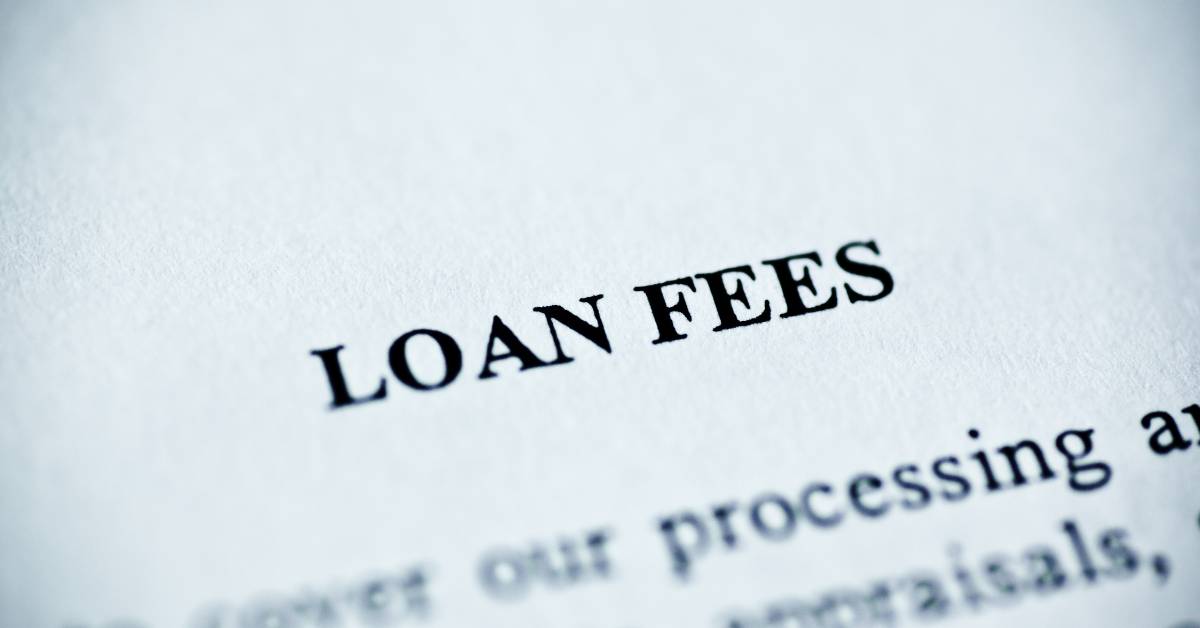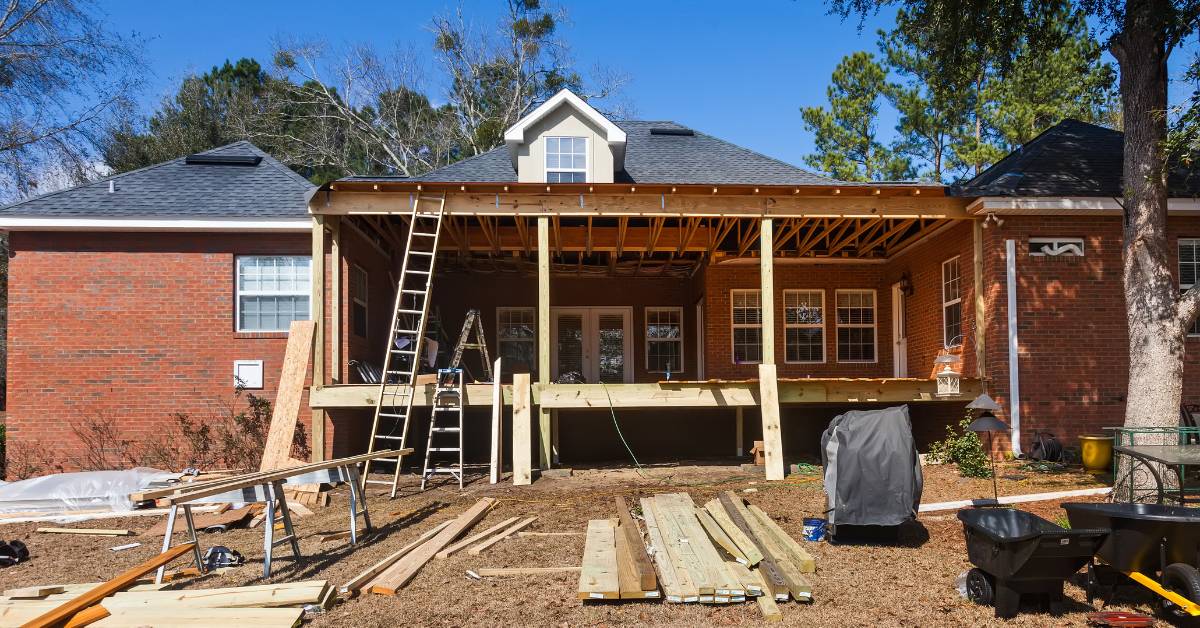USDA loans—these 4 letters can make a world of difference for homebuyers in rural areas.
Understanding the basics of USDA loans as a seller and its specific requirements can lead to a successful home sale. So buckle up, and let’s explore the fascinating world of USDA loan seller requirements together!
We’ll start by shedding light on the basics of USDA loans, then dive deep into the seller requirements that make these loans a unique opportunity.
From property eligibility to seller concessions and closing costs, we’ve got you covered. So, without further ado, let’s get started!
USDA Loan Basics
USDA loans are like a breath of fresh air for those seeking a path to homeownership in rural areas. Administered by the U.S. Department of Agriculture, USDA loans offer low-interest rates and 100% financing—a winning combo, if you ask me!
And that’s not all; these loans come in two flavors: Direct and Guaranteed.
- Direct USDA Loans: These loans come straight from the USDA and are designed to assist low-income homebuyers. Uncle Sam’s got your back!
- Guaranteed USDA Loans: These loans are offered by approved lenders and backed by the USDA. It’s like a safety net that gives lenders the confidence to lend.
Here’s a comparison of the two:
| Loan Type | Description | Designed For | Lender | Interest Rate | Guarantee Fee | Annual Fee |
|---|---|---|---|---|---|---|
| Direct USDA Loan | Loans provided directly by the USDA | Low-income homebuyers | U.S. Department of Agriculture | Low, fixed rate | N/A | N/A |
| Guaranteed Loan | Loans offered by approved lenders and backed by the USDA | Moderate-income homebuyers | Approved private lenders | Market-based | Yes | Yes |
Note that you can also refinance your USDA loan along the payment term for better rates. But enough about buyers; let’s shift gears and talk about the seller’s role in this journey.
USDA Loan Seller Requirements: An Overview
When it comes to USDA loan transactions, sellers are the captains of the ship. Navigating the seller’s requirements is key to reaching the destination of a successful home sale. So, what does it take to be a savvy seller in the USDA loan arena?
The first order of business is to ensure that the property is eligible for a USDA loan. The USDA has specific criteria for eligible properties, and it’s essential to make sure your property checks all the boxes. Don’t worry; we’ll delve into the details in the next section!
In addition to property eligibility, there are certain do’s and don’ts for sellers. From seller concessions to closing costs, there are guidelines to follow, and being aware of them can make the process smooth sailing.
Property Eligibility and Condition

Location, location, location—it’s the mantra of real estate, and it holds true for USDA loans as well. To be eligible for a USDA loan, a property must be located in a designated rural area. But don’t let the word “rural” fool you; many suburban areas also qualify. It’s like finding hidden treasure on a treasure map!
The condition of the property also plays a pivotal role in USDA loan transactions. The home must meet USDA’s safety and livability standards. Think of it as a cozy and safe haven for the buyer. Any necessary repairs and improvements must be addressed before closing, ensuring that the home is in a shipshape!
From the roof to the foundation, the property must be in tip-top condition. To make things easier, here are some key aspects of property conditions to consider:
- Structural integrity: The home should stand tall and strong, free from major defects.
- Safety features: Working smoke detectors and safe electrical systems are a must.
- Cleanliness: A spick-and-span home is a happy home.
With property eligibility and condition in check, let’s move on to the nuances of seller concessions and contributions.
Seller Concessions and Contributions
Seller concessions are like a cherry on top of the home sale sundae.
They’re contributions made by the seller to help sweeten the deal for the buyer. And here’s the kicker—USDA loans have specific limitations on the amount of seller concessions allowed. It’s essential to strike the right balance to ensure a win-win situation for both parties.
Common types of seller concessions include:
- Paying for a portion of the buyer’s closing costs
- Offering a home warranty
- Contributing to discount points to lower the interest rate
However, there’s a catch! USDA loans typically limit seller concessions to no more than 6% of the sale price. It’s like a guardrail that keeps the transaction on track and fair for everyone involved.
There’s more! In addition to concessions, some sellers may choose to contribute to certain repairs or improvements. This gesture can go a long way in making the home sale process a breeze.
Just be sure to adhere to USDA guidelines and work with your lender to ensure everything is on the up and up.
Closing Costs and Fees

Ah, closing costs—the final hurdle in the home sale relay race. It’s the grand finale, and it’s crucial for sellers to be well-prepared. So, what’s the scoop on closing costs and fees for USDA loans?
As a seller, you may be responsible for certain closing costs. These costs can include title insurance, transfer taxes, and recording fees, among others. The exact amount and responsibilities can vary based on the purchase agreement, so it’s essential to read the fine print!
Considering how the USDA loan works, there are also specific fees and charges to consider:
- Guarantee Fee: This fee is unique to USDA Guaranteed Loans and is used to support the program. It’s like a small token of appreciation for the USDA’s backing.
- Annual Fee: This recurring fee is also specific to USDA Guaranteed Loans and is paid annually over the life of the loan.
With a clear understanding of closing costs and fees, you’ll be ready to cross the finish line with confidence. Now, let’s dive into the appraisal process—a crucial step in the USDA loan journey.
Understanding the Appraisal Process
The home appraisal process is like a magnifying glass, examining every nook and cranny of the property. It’s an unbiased assessment of the home’s value, and it plays a big role in USDA loan transactions.
For USDA loans, the appraisal must be conducted by a qualified appraiser. This professional will evaluate the property’s condition, compare it to similar homes in the area, and provide an estimate of its value. It’s like a stamp of approval, affirming that the home is worth the investment.
An appraisal that comes in lower than the sale price can be a stumbling block, but it’s not the end of the road. Buyers and sellers can work together to find a solution, whether it’s renegotiating the price or making repairs to boost the home’s value. It’s all about teamwork and flexibility!
With a thorough understanding of the appraisal process, you’ll be well-equipped to navigate any twists and turns along the way. Speaking of twists and turns, let’s discuss some common issues and solutions for USDA loan transactions.
Common Issues and Solutions

In the world of USDA loans, there can be bumps in the road. But fear not, intrepid seller! With a little foresight and problem-solving, you can tackle any challenge that comes your way.
One common issue in USDA loan transactions is a delay in loan processing. USDA loans may require additional approvals, and it’s like waiting for your favorite ride at an amusement park. Patience is key! Working closely with the lender and buyer can help streamline the process and keep things moving.
Another potential challenge is addressing the required repairs identified in the appraisal. It’s like a to-do list for the home, and tackling it promptly can make all the difference. The good news is that you have options, whether it’s negotiating with the buyer to complete the repairs or offering a credit at closing to cover the costs. Just remember, communication is key!
And here’s a bonus tip—being proactive and addressing any known issues before listing the property can help prevent surprises down the road. It’s like smoothing out the path before embarking on the journey!
Tips for Sellers Participating in USDA Loan Transactions
We’ve come a long way, and you’re now well-versed in the world of USDA loan seller requirements. But before we part ways, we’ll leave you with a few tips and tricks to make your USDA loan transaction a smashing success!
- Be Informed: Knowledge is power! Staying informed about USDA loan guidelines and working with a knowledgeable real estate agent can help you sail through the process with ease.
- Be Flexible: Flexibility is the name of the game. Being open to negotiations and willing to work with the buyer can create a harmonious home sale experience.
- Be Prepared: Preparation is the key to success. Gather all necessary documents, address any property issues, and be ready for each step in the home sale process.
With these tips in your back pocket, you’re ready to conquer the USDA loan world and enjoy a successful home sale.
We recommend reviewing the seller requirements for other government-backed mortgages like the FHA loan. But first, learn the differences between the two.
Frequently Asked Questions
Can you get extra money on a USDA loan?
Yes, you can potentially get extra money on a USDA loan for repairs and improvements through the USDA’s Single Family Housing Repair Loans and Grants program. This program, also known as the Section 504 Home Repair program, is designed to help eligible low-income homeowners make necessary repairs, improvements, or modernizations to their homes. It provides loans and grants to qualified individuals in rural areas. There’s also the USDA construction loan program that helps low-income earners finance the building of a new home.
What are the minimum credit score requirements for a USDA loan seller?
There are no minimum credit score requirements for a USDA loan seller, as credit scores are primarily a concern for the buyer, not the seller. The seller’s role in a USDA loan transaction involves meeting property eligibility and condition requirements, as well as adhering to guidelines for seller concessions and contributions.
What kind of property inspections are required for a USDA loan?
For a USDA loan, a home appraisal is required, and certain types of property inspections may also be necessary depending on the condition of the home and the lender’s requirements. The home appraisal is conducted by a qualified appraiser and serves as an unbiased assessment of the property’s value and condition. It ensures that the property meets the USDA’s safety and livability standards.
How long does the USDA loan seller approval process take?
There is no specific “USDA loan seller approval process,” as the seller is not subject to approval by the USDA. Instead, the property being sold undergoes an appraisal and must meet the USDA’s property eligibility and condition requirements. The timeframe for the appraisal and any required inspections can vary based on factors such as the availability of appraisers and inspectors, as well as the complexity of the property.
What happens if a seller does not meet the USDA loan requirements?
If a seller does not meet the USDA loan requirements, the property may not be eligible for financing through a USDA loan, which could result in the cancellation of the sale. For example, if the property does not meet the USDA’s location and condition requirements, or if the seller is unwilling to address necessary repairs identified during the appraisal or inspections, the buyer’s application for USDA financing may not go through.
Who is responsible for meeting the USDA loan seller requirements?
The seller is responsible for meeting the USDA loan seller requirements. This includes ensuring that the property meets USDA’s location and condition criteria, adhering to guidelines for seller concessions and contributions, and addressing any necessary repairs or improvements identified during the appraisal or inspections. The seller’s cooperation is essential for a successful USDA loan transaction.
Can a seller contribute towards a buyer’s closing costs on a USDA loan?
Yes, a seller can contribute towards a buyer’s closing costs on a USDA loan, but there are limitations. Specifically, seller concessions are typically limited to no more than 6% of the sale price. These concessions can include contributions towards the buyer’s closing costs, offering a home warranty, or paying for discount points to lower the interest rate. Sellers should be aware of these limits to ensure compliance with USDA guidelines.
Are there any restrictions on the type of property that can be sold with a USDA loan?
Yes, there are restrictions on the type of property that can be sold with a USDA loan. The property must be located in a designated rural area as defined by the USDA, and it must meet the agency’s safety, livability, and structural standards. Additionally, USDA loans are intended for primary residences, so investment properties and vacation homes are not eligible. Properties must also be modest in size, design, and cost based on USDA’s guidelines.
Can a seller back out of a USDA loan deal after the contract has been signed?
Generally, a seller cannot unilaterally back out of a USDA loan deal after the contract has been signed without facing potential legal consequences. The purchase agreement is a legally binding contract, and both parties are expected to fulfill their obligations. If a seller wishes to back out, they must have a valid reason as outlined in the contract, such as a contingency not being met. Otherwise, the buyer may have legal recourse, including seeking specific performance or damages.
Are there any fees associated with being a USDA loan seller?
There are no specific fees associated with being a USDA loan seller, but sellers may be responsible for certain closing costs. These costs can include title insurance, transfer taxes, recording fees, and other costs outlined in the purchase agreement. Additionally, sellers may choose to offer concessions to the buyer, such as contributing towards closing costs or repairs. While there are no USDA-specific fees for sellers, it’s important to understand the financial obligations associated with the home sale process.
What’s Your Next Move in the USDA Loan Journey?
And there you have it—a comprehensive guide to USDA loan seller requirements. We’ve explored the ins and outs, from property eligibility to closing costs, and offered tips for a smooth home sale. Whether you’re a seasoned seller or a newbie to the USDA loan world, this guide has something for everyone.
As you embark on your USDA loan journey, remember that you’re not alone. Lenders, real estate agents, and the USDA are all here to support you every step of the way.
So, what’s your next move? Will you navigate the USDA loan waters with newfound confidence? Whatever your path, we wish you the best of luck and a home sale filled with smooth sailing!






